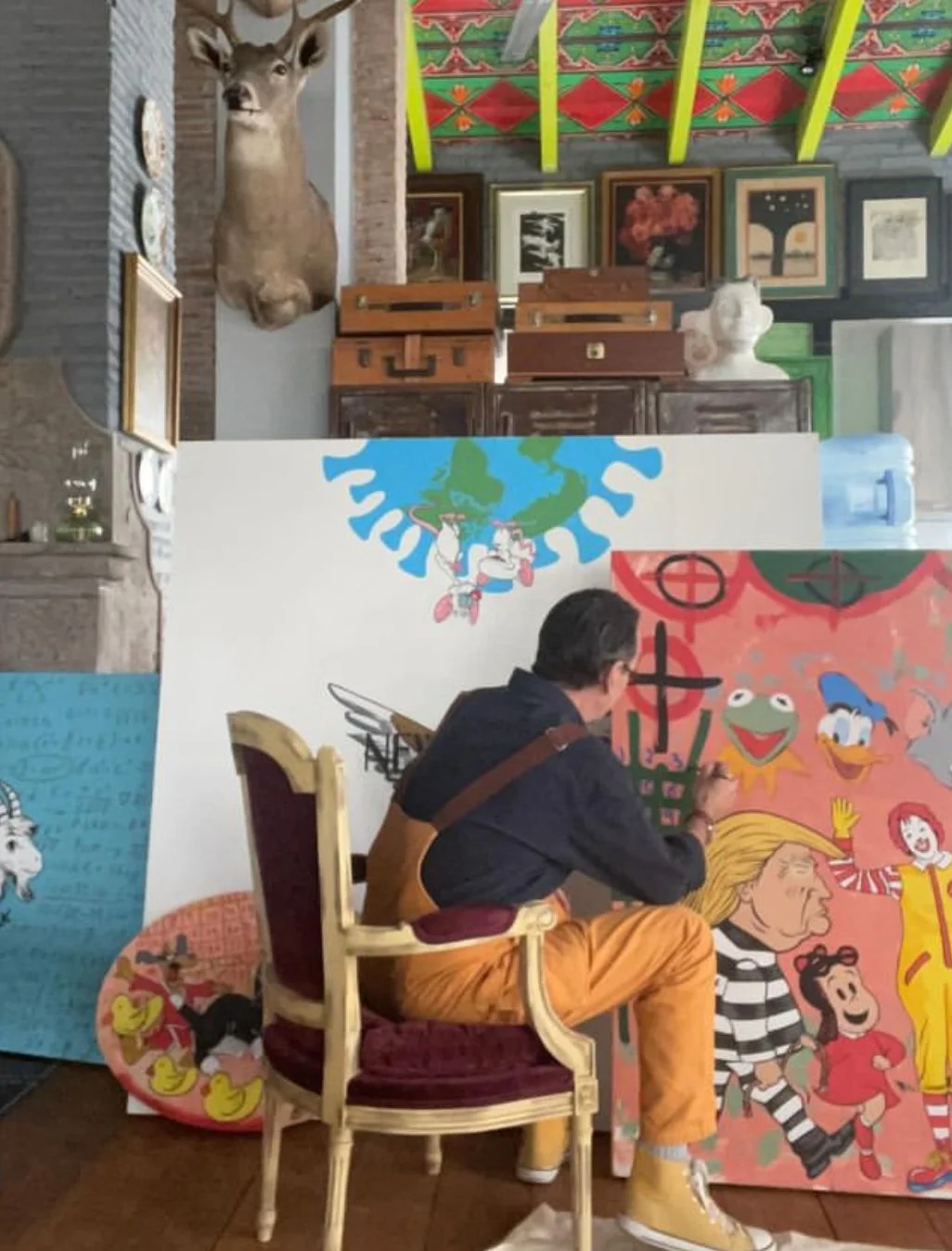Jaime Shelley’s pop Art, serves as a vivid reflection of the ever - evolving social, political, and emotional landscape. With his signature dark humor, Shelley not only entertains but also encourages introspection, prompting viewers to ponder and interpret each element with depth and nuance. Owning one of his masterpieces would undoubtedly elevate any art lover’s collection, adding a captivating focal point rich in cultural commentary and artistic brilliance.
JAIME SHELLEY
I've been painting since I was a child. The first things I depicted were portraits. I painted the whole family, my friends, and myself. I painted purely out of curiosity. I still remember that rebellious and challenging feeling I had about following traditional drawing techniques; my inner self pushed me to do just the opposite of what I was told to do, and this is how I still feel, loyal to a permanent quest, a style, a personal aesthetic. This is probably the reason for my being a self-made artist, I'm not interested in being part of a specific style or trend. My interest lies in art for art's sake, that is, to tell what is inside of me. This is something personal and natural. No conditions, no bearings, except those dictated by me.
Painting, for me, is more than a profession: it is how I see the world, my world, how I see the moment I live, the things I am familiar with. More than a moralist, I am ironic, looking for and promoting freedom in all its forms, I believe that a sense of humor is essential in life.
My art tries to mirror human nature. And in this quest, my mentors, those who have been guiding me - with great respect and venerable admiration - are Leonardo Da Vinci and the Renaissance painters; Diego Velazquez with his Meninas and thread-weavers with that admirable and unequaled technique. I have been influenced by some of the great Mexican muralists, such as Jose Clemente Orozco, who caught my attention from childhood and stimulated my imagination. From the so-called Rupture, I admire almost all of them, particularly Jose Luis Cuevas, an Alberto Gironella, excellent draftsmen, and unending creators. Of course, Picasso and Andy Warhol, the father of Pop art, have had considerable influence on me; they both changed the way I create art and I greatly identify with their work. All of these artists have impacted and shed a great influence on my work.
“My work is not seeking perfection;
It places itself in the permanent search and evolution of its time and shape”
I knew Jaime Shelley since he was a child. A friend of my daughters, he frequently visited the house and on some occasions went up to my study where I was in the middle of work. It took me a while to notice his presence, because his incursions were done silently, but there was always something unforeseen, such as him tripping over some object or not being able to suppress an inopportune sneeze. After apologizing, he accepted my invitation to remain in my studio while I continued my work. He didn't speak but he looked. He observed my already made drawings, as well as all the objects that have been accumulated in the three large pieces, which constitute “my workshop”, as in ancient times the workshops where artists worked were named.
Jaime Shelley is the son of a poet and lived surrounded by books that he could freely review without prohibition. Perhaps one day he was tempted to write, but his vocation for drawing and painting suddenly emerged in an impetuous way. Life has forced him to carry out other activities; but still, whether in the mornings or at night, he paints pictures that are the result of deep reflections on the painting of great old masters. Hence his variations on Velázquez's Meninas. But there are also Mexicanist images, which come from our very own iconography, which includes representations of figures from our national history such as Madero “Holy Madero?” or Zapata standing next to the twins Ivonne and Yvette.
Another painting – among the best of his recent production – is titled “Beautiful Mexican Republic.” Well-painted and well-composed work represents a character dressed in a suit and wearing a hat, who we easily identify as a drug trafficker or a kidnapper. To the right of the composition appears the national emblem of the eagle and the snake
Fighters and bullfighters could not be missed. The one dedicated to this topic has been titled “The little bull” and refers to the popular art of the village fairs or to the film posters that advertised, in a very naive way, the Mexican films of the 1930s.
Greetings to Jaime Shelley, an artist to whom I can, without fear of being wrong, predict a bright future in the century that is about to begin.
Jose Luis Cuevas 1999
(Letter is translated to English)



